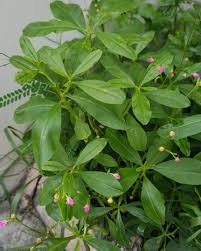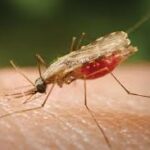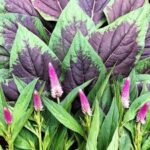Waterleaf: NigeriaŌĆÖs Juicy Green Gem for Health and Healing

Common Name: Waterleaf
Yoruba Name: Gbure
Igbo Name: Mgbolodi
Hausa Name: Alenyruwai
Botanical Name: Talinum triangulare
Family: Talinaceae
¤ī┐ Introduction
Waterleaf, known locally in Yoruba as Gbure, is a popular leafy vegetable found in gardens, farms, and kitchens across Nigeria. Though often overshadowed by more prominent vegetables like Ugwu and Efo Shoko, Waterleaf is a nutritional powerhouse and a staple ingredient in traditional Nigerian dishes, particularly in the southern regions.
ŌĆ£Beat the Pressure: A Comprehensive Guide to Lowering Blood Pressure Naturally.ŌĆØ
Buy book from Gumroad or Paystack
Its lush, juicy leaves and stems are not only used to enhance the taste and texture of meals but also revered for their healing properties and rich micronutrient content. With its high water content and distinctive mild taste, Waterleaf plays a dual role as food and medicine.
¤ÅĪ Origin and Cultivation
Waterleaf (Talinum triangulare) is native to tropical West Africa and is widely cultivated across Nigeria, Ghana, Cameroon, and other parts of Central and South America. It grows quickly and spreads rapidly, making it an ideal choice for home gardens and small farms.
Waterleaf is a hardy and fast-growing plant that thrives in moist, loamy soil and requires minimal maintenance. It can be harvested within 4ŌĆō6 weeks of planting and continues to grow back after cutting, making it one of the most economical vegetables to cultivate.
¤¦¬ Nutritional Composition (per 100g of fresh leaves)
- Water: ~90%
- Calories: ~25 kcal
- Protein: ~4.0 g
- Fat: ~0.5 g
- Carbohydrates: ~4.5 g
- Dietary Fiber: ~1.8 g
- Calcium: ~240 mg
- Iron: ~6.2 mg
- Phosphorus: ~50 mg
- Vitamin A (beta-carotene): High
- Vitamin C: ~100 mg
- Folate, Potassium, Magnesium, Zinc: Abundant
Waterleaf is one of the few vegetables that offers high hydration, dietary fiber, and antioxidants in one package.
¤ÆÜ Health Benefits of Waterleaf
1. Improves Digestion and Prevents Constipation
Thanks to its high water and fiber content, waterleaf promotes healthy digestion and relieves constipation. It adds bulk to stool and helps cleanse the digestive tract naturally.
2. Supports Eye Health
Waterleaf is rich in beta-carotene (vitamin A), which is essential for maintaining good vision and preventing age-related eye issues.
3. Boosts Immune System
The vitamin C content in waterleaf strengthens the immune system, enhances collagen production, and supports healing processes.
4. Regulates Blood Sugar
Studies suggest that waterleaf may help lower blood sugar levels, making it beneficial for diabetics and those managing insulin resistance.
5. Reduces Blood Pressure
Waterleaf has anti-hypertensive properties, partly due to its potassium content, which helps relax blood vessels and control blood pressure.
6. Promotes Brain Health
With its omega-3 fatty acids and minerals like magnesium and phosphorus, waterleaf supports cognitive function, memory, and mental clarity.
7. Aids Weight Loss
Because of its low calorie and high water content, waterleaf is an excellent food for those aiming to lose or maintain weight. It keeps you full without contributing to calorie overload.
¤ŹĮ’ĖÅ Culinary Uses
Waterleaf is an essential part of traditional Nigerian cuisine, particularly in the south-south and southeast regions.
Popular Recipes Include:
- Edikang Ikong Soup: A rich vegetable soup from the Efik and Ibibio people, combining waterleaf and fluted pumpkin (Ugwu) with meats, fish, and spices.
- Afang Soup: A unique dish using waterleaf and Afang (wild spinach), loved by the Efik and Ibibio tribes.
- Vegetable Sauce: Waterleaf is stir-fried with onions, tomatoes, and spices as a healthy side dish.
- Porridge (Yam or Plantain): The juicy leaves add moisture and a slightly tangy flavor to yam or plantain porridge.
- Smoothies and Juices: In modern health circles, waterleaf is added to green juices for detox and hydration.
Tip: Always cook waterleaf lightly to retain its nutrients. Overcooking may make it mushy and reduce its health value.
¤æ®ŌĆŹ¤īŠ How to Grow Waterleaf
Easy Steps for Backyard Gardening:
- Soil: Moist, well-drained loamy soil.
- Propagation: Use cuttings or seeds.
- Watering: Water daily or as needed to keep soil moist.
- Harvesting: Begin harvesting in 3ŌĆō4 weeks after planting. It grows back quickly.
Because it self-seeds, waterleaf often reappears without planting, making it ideal for sustainable gardening.
ŌÜĀ’ĖÅ Precautions
- Waterleaf has a high oxalate content, which in excess may contribute to kidney stones. Always cook it briefly and avoid raw consumption if you have kidney issues.
- Wash thoroughly to remove dirt and any residual pesticides.
¤īŹ Cultural and Medicinal Importance
In many Nigerian communities, waterleaf is more than just foodŌĆöit is part of folk medicine. Herbalists use it to treat conditions like anemia, malaria, high blood pressure, and internal inflammation.
Among the Efik and Ibibio people, waterleaf is an indispensable part of hospitality and ceremonial meals. In Yoruba homes, itŌĆÖs commonly paired with Gbegiri or stewed beans to enhance taste and nutrition.
Ō£ģ Conclusion
Waterleaf (Talinum triangulare) is a humble yet powerful vegetable, offering a blend of flavor, moisture, and health benefits. Whether in soups, sauces, or porridge, it enriches the Nigerian plate and supports wellness naturally. Its ease of growth, affordability, and broad therapeutic properties make it a green hero in Nigerian cuisine and traditional medicine.
If you’re looking to boost your health, enrich your meals, and stay hydrated, waterleaf is the vegetable for you.
┬Ā
¤Æö ŌĆ£She said she loved me. And for fifty-two years, I believed her.ŌĆØ ¤Æö
Buy The Book "The Longest Lie: A HusbandŌĆÖs Journey Through Love, Betrayal, and Redemption" From Gumroad
┬Ā






